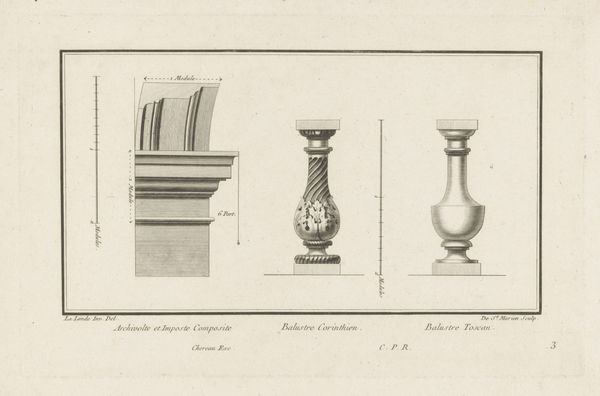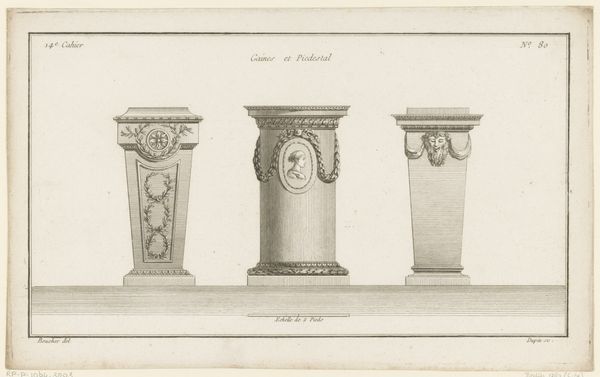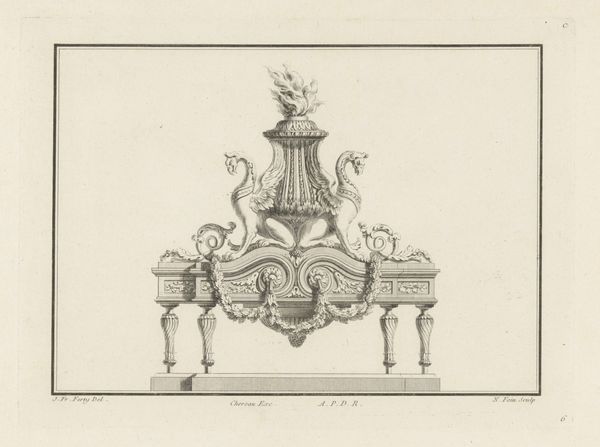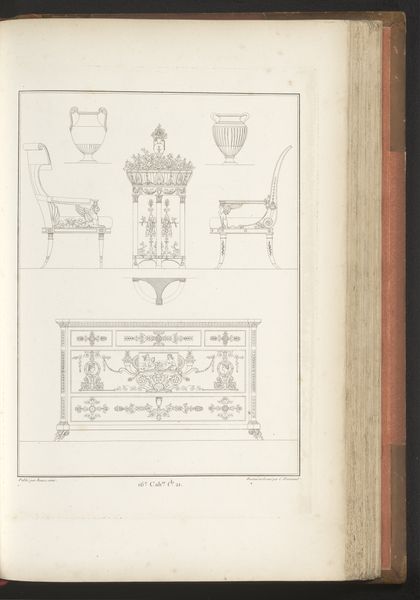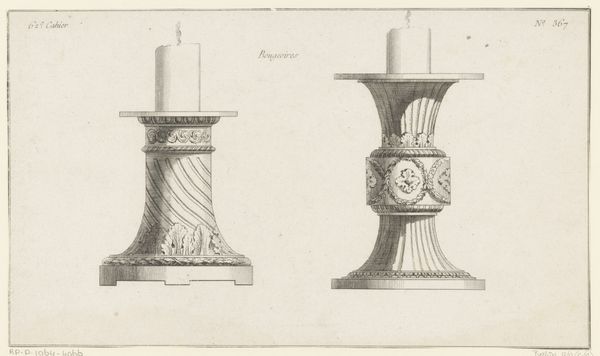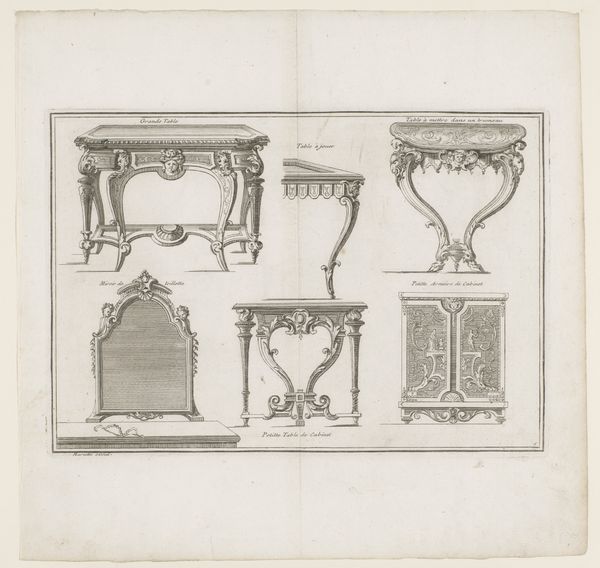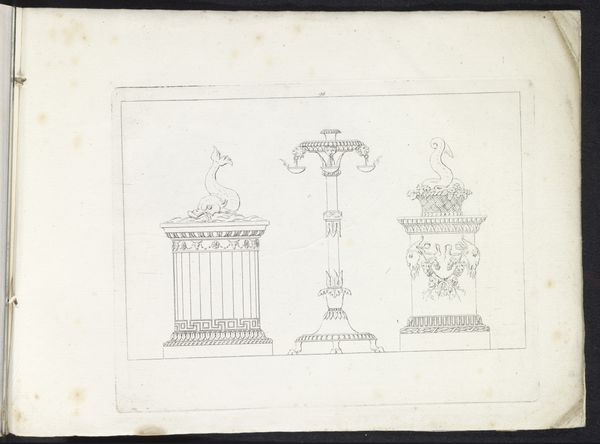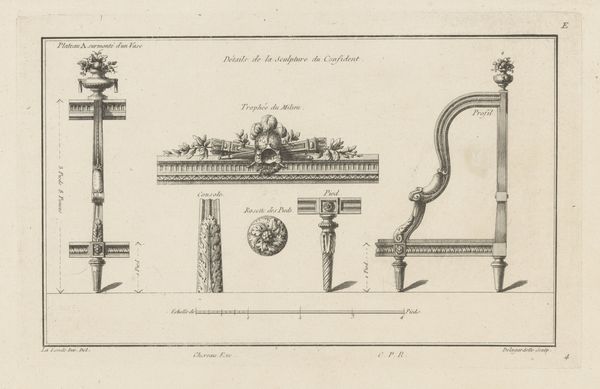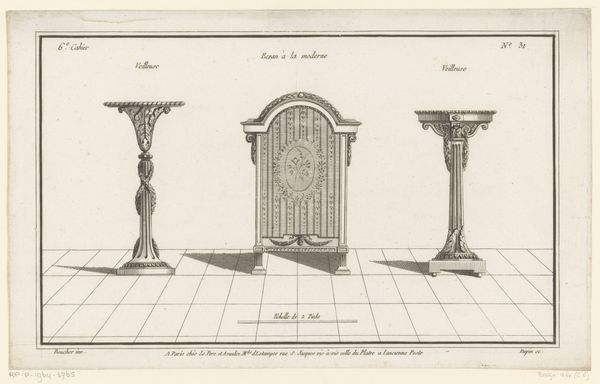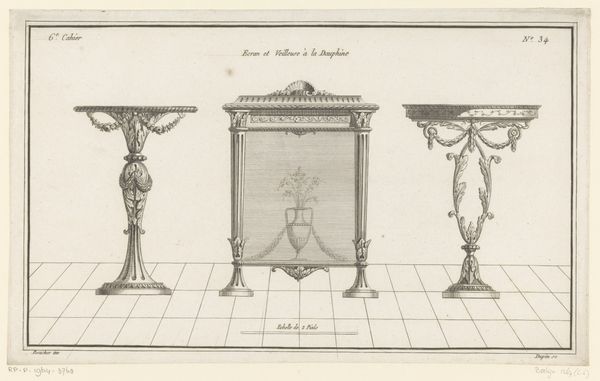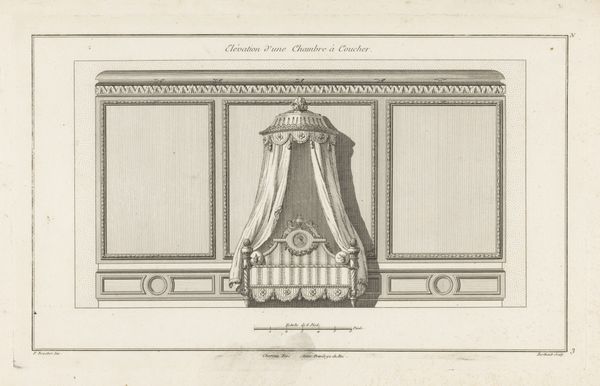
drawing, print, engraving
#
drawing
#
neoclacissism
# print
#
old engraving style
#
classical-realism
#
form
#
geometric
#
line
#
sketchbook drawing
#
academic-art
#
engraving
Dimensions: height 188 mm, width 288 mm
Copyright: Rijks Museum: Open Domain
Curator: This is "Impost, Vaas en Altaar" by de Saint-Morien, dating back to 1784-1785. The Rijksmuseum holds it. Editor: It strikes me as a design blueprint. Precise, but sterile. It's all lines, isn't it? Cool greys, neatly composed… very clinical. Curator: Indeed. It’s an engraving, a print. Saint-Morien utilizes line and form within the burgeoning Neoclassical movement. We’re seeing a fascination with the geometry inherent in classical architecture, and also an illustration of its individual components. Note, also, the precise tools required to construct them. Editor: So, it's less about aesthetic appreciation and more about… understanding the nuts and bolts, literally and figuratively? Focusing on production techniques rather than some grand narrative? Curator: Exactly. The focus isn't the complete building, but on individual components, displayed almost scientifically. Consider the social context, too. Increased access to printed material meant this type of design was not confined to elite architects. Craftsmen now could easily purchase such engravings, spreading Neoclassical design and contributing to its increased implementation in society. Editor: Fascinating. It disrupts the traditional hierarchy of art and craft. The artist is acting as a disseminator of design, not just its originator. The museum thus acts as a site to observe how imagery plays a socio-political role through instructional diagrams. Curator: And it’s more than just how people built buildings. It’s about taste-making, a controlled distribution of influence under the guise of objective observation. It is, in that sense, highly political. Editor: I agree. Viewing the tools used to create objects rather than observing the objects, themselves, gives the image both transparency and function as a material lesson for artists. Curator: Exactly, and thinking about art as function is key. So often we treat paintings and sculptures as unique works, completely separate from material conditions. Editor: But that's often never the case! Thanks, this print really challenges those perspectives. Curator: My pleasure. There's always something fascinating in tracing the connections between an artwork and its means of production, wouldn't you agree?
Comments
No comments
Be the first to comment and join the conversation on the ultimate creative platform.
